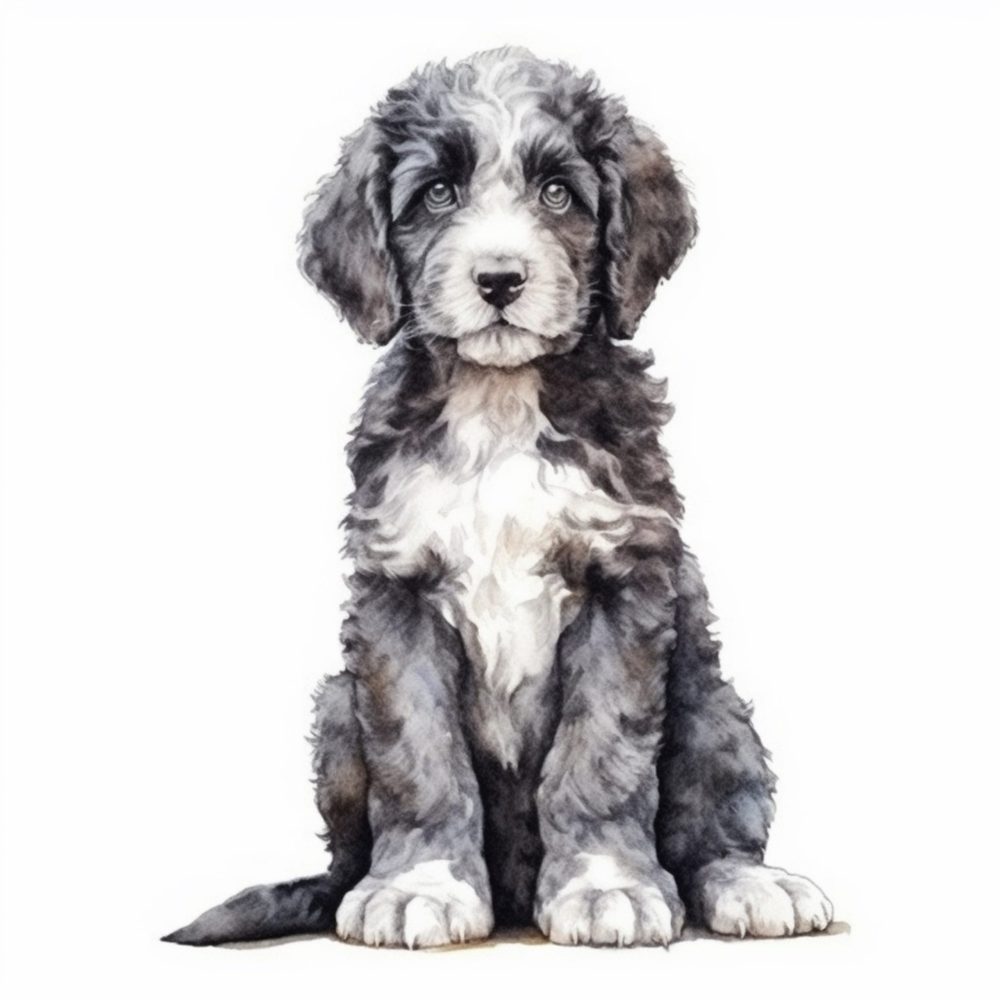
When the AKC recognized the Portuguese Water Dog in 1983, it was, for many people, an exotic breed they were seeing for the first time.
The breed, however, had been around long before then.
With regards to the breed’s presence in the United States, New Canaan, Connecticut residents, Herbert Miller and his wife, imported a Portuguese Water Dog bitch named “Chenze” from Senhora Branco in 1968. Branco was the heir to the kennels of Vasco Bensaude, a wealthy Portuguese businessman who had been pivotal in preserving and developing the modern PWD. Some sources write that “Chenze” marked the introduction of the breed to the United States, but to this some say, “Not so fast.”
The AKC briefly mentions a couple named the Harringtons who traded rare breeds including Portuguese Water Dogs. Digging a little deeper elsewhere, we learned that in 1958, Mr. and Mrs. Arthur Harrington of Rensselaer, New York acquired a pair of PWDs from England as part of a trade (in exchange, the Harrington’s provided a pair of Affenpinschers). This is clearly an earlier chapter of the breed in America than the efforts by the Millers of Connecticut in the late 60s, but it was less successful. The Harringtons bred their Portuguese Water Dogs resulting in a litter, but the line eventually died out. The Millers, in contrast, not only bred a litter in 1971, but the gathering of sixteen people they had in their home in August of 1972 led to the establishment of the Portuguese Water Dog Club of America, and their litter became the first one recorded by the newly formed PWDCA. Eventually, Mrs. Miller imported from Portugal a PWD named Ch. Charlie de Alavalade. Better known as Charlie Brown, this dog became an important ambassador for the breed; in 1984, he became the first PWDCA breed champion, and went on to win four Best of Breed titles at the Westminster Kennel Club Dog Show.
As we circle back to discussing the age of the breed, we have to go earlier than 1958.
A lot earlier.
We refer to the first written description of the breed provided by a monk who had spotted a drowning sailor. Close to going under water for perhaps the final time, the sailor was saved by a dog with “black coat of rough hair, cut to the first rib and with a tuft on the tip of his tail.” This aptly described one of the two clips still in use for the breed, the lion clip, but more important is the year in which this account was recorded: 1297.
It may be older than that!
Among the theories regarding the origins of the Portuguese Water Dog include the Iberian Peninsula Theory (200 B.C.E.) which suggests that the breed’s roots can be traced back to the Iberian Peninsula where it evolved from the interbreeding of various working dogs brought by Romans, Visigoths, and Moors. Other cynologists posit that the breed originated near the border between Russia and China where Nomadic Berber warriors captured some of these dogs taking them across Asia to North Africa and eventually to the Iberian Peninsula (this is the “Asian Origin Theory” (700 B.C.). And finally, the Gothic Origin Theory suggests that the breed’s ancestors were brought to the Iberian Peninsula by the Visigoths who arrived from what is now Germany where they fought the Romans, and settled in the region. Those Visigoths. Always quarreling.
Whatever the truth of its earliest history, what remains is that the PWD is a considerably old breed even as it was the “new” kid on the block for many people in 1983.
Image: Illustration by Hermit Crab Designs
